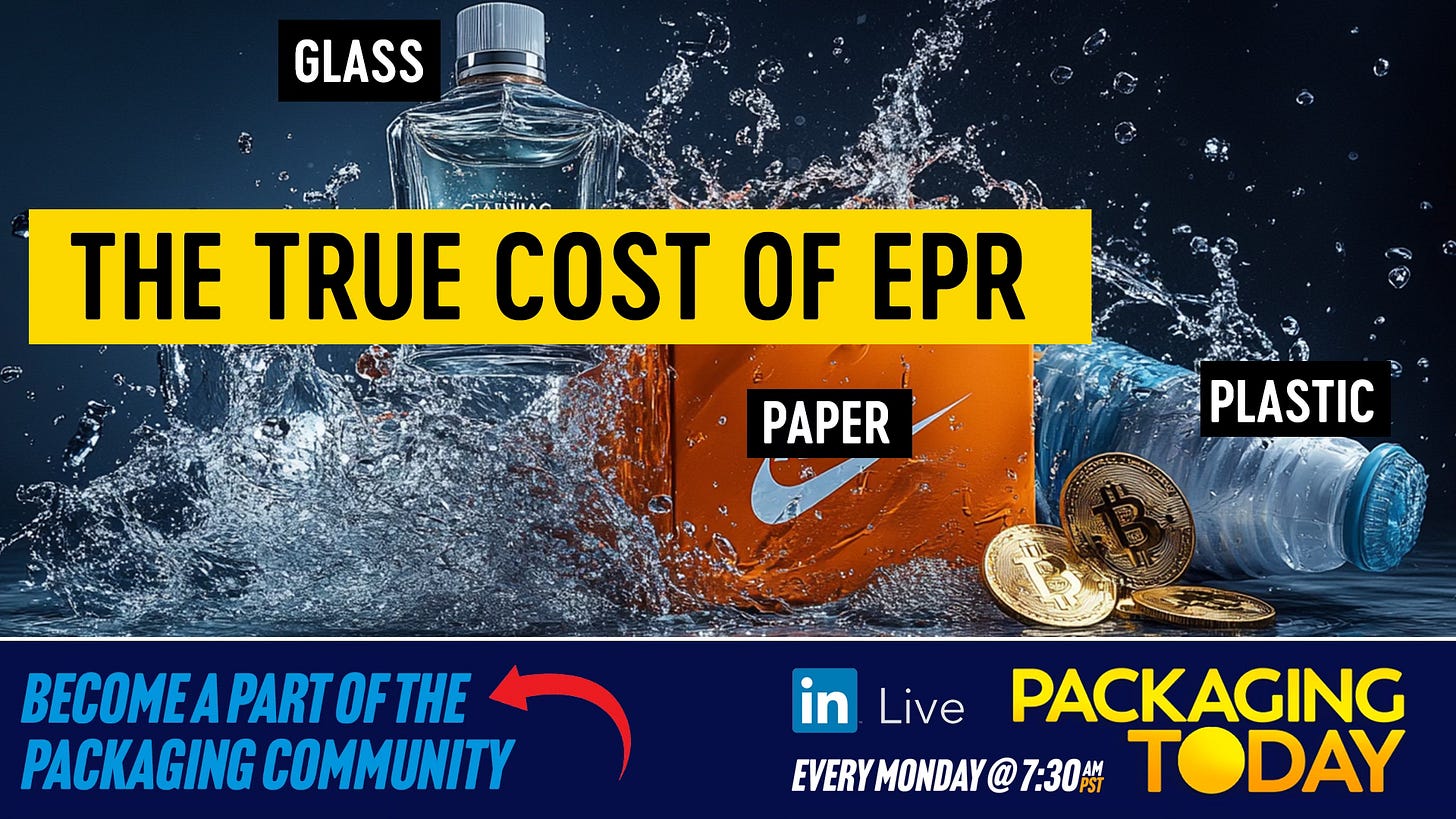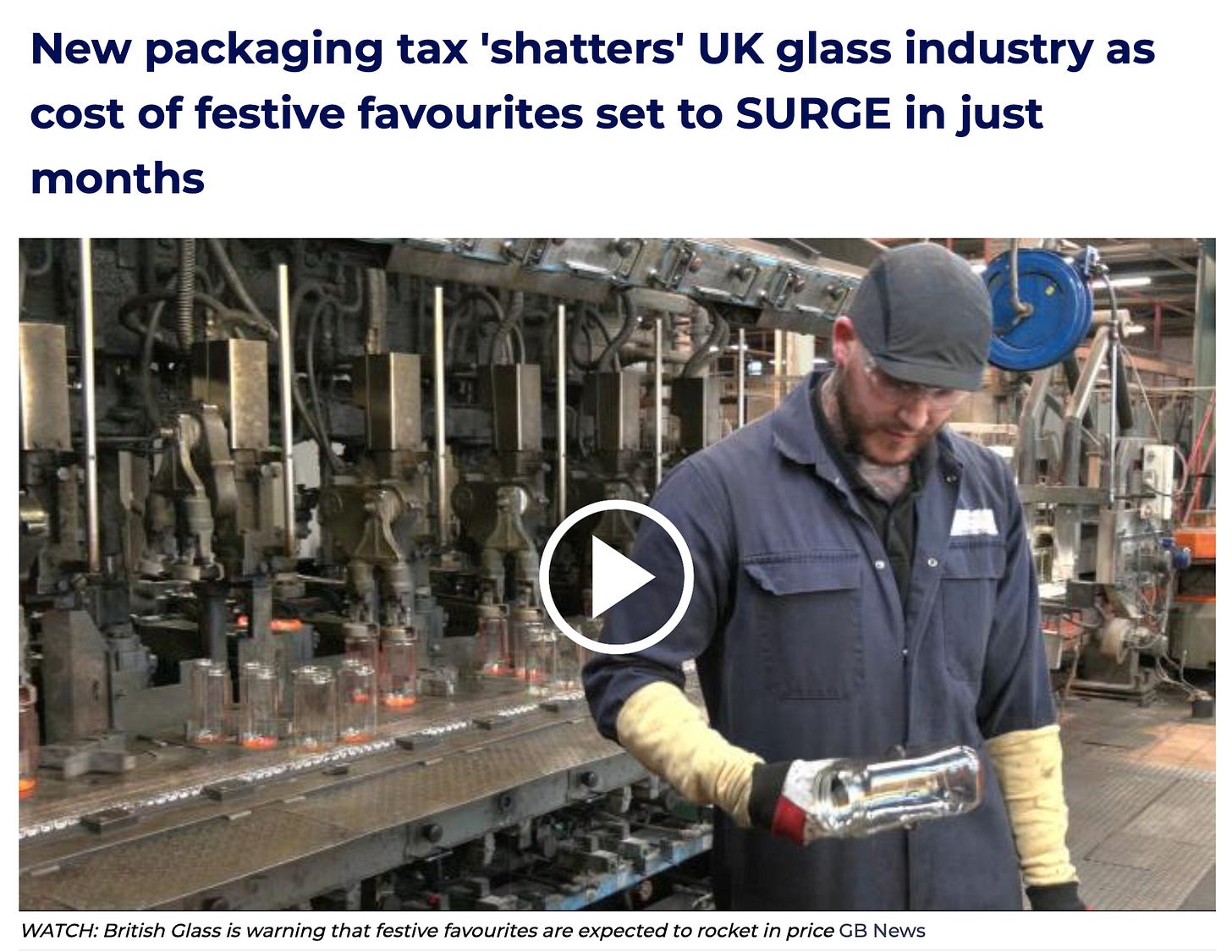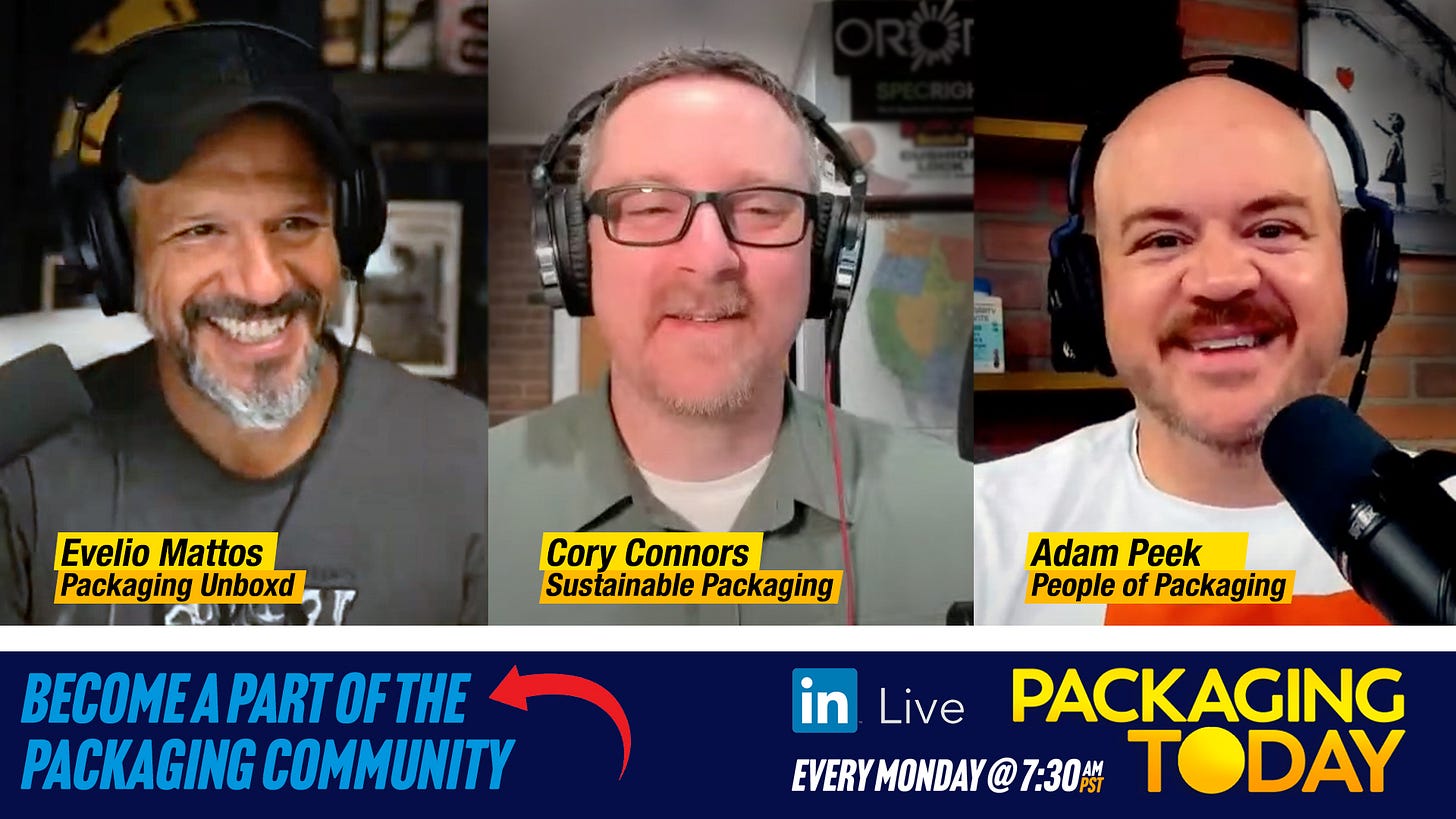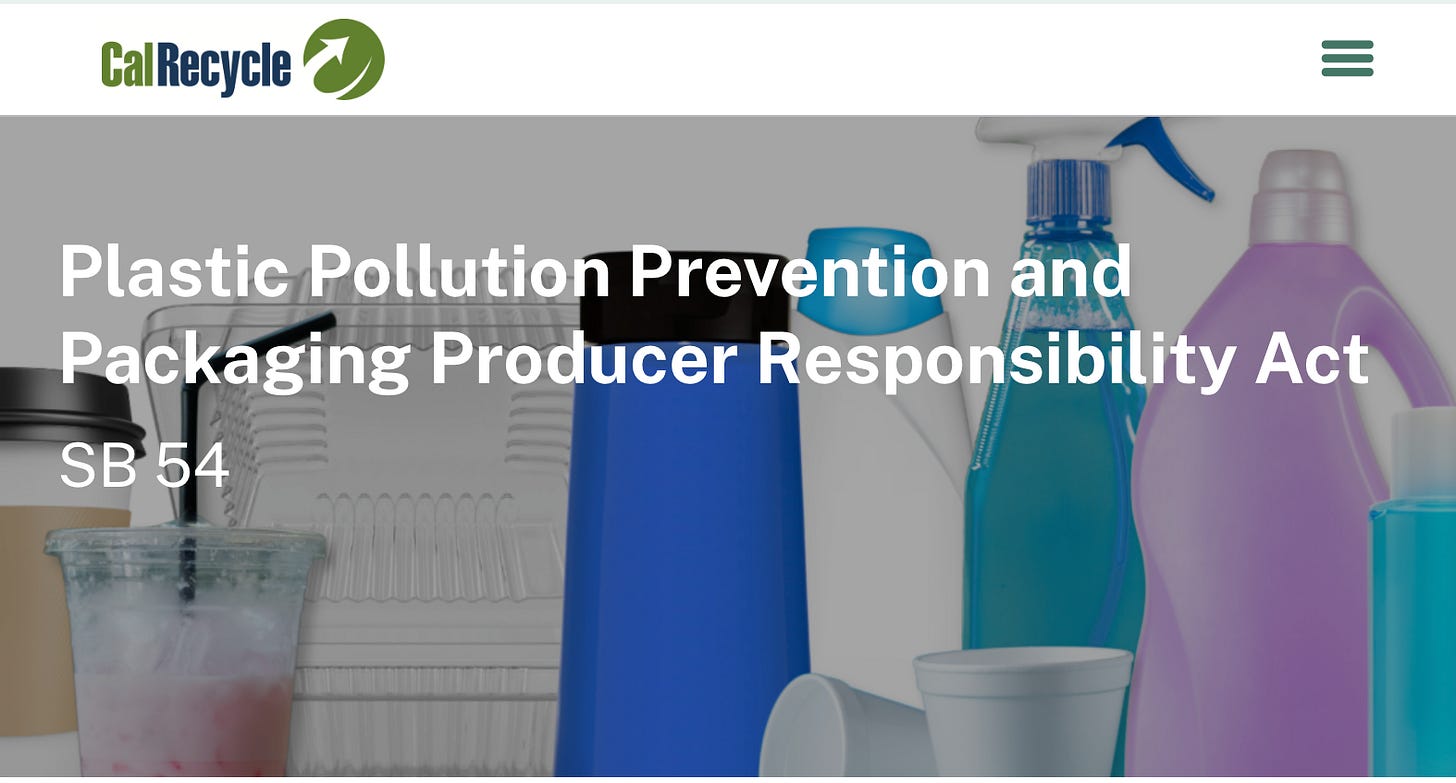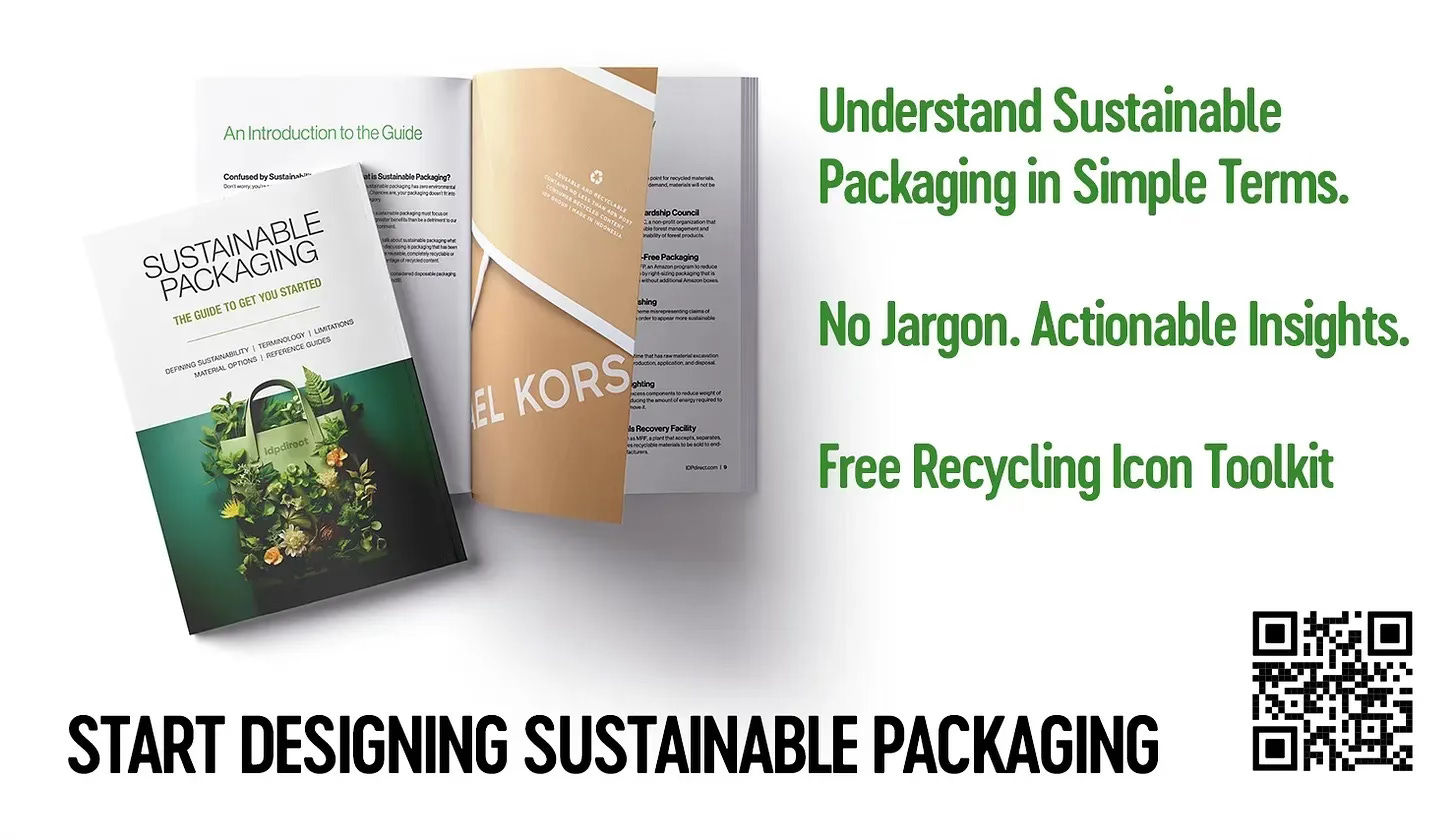Key Takeaways:
Market Dynamics: EPR policies are reshaping the economics of packaging, influencing material choices and pricing strategies for manufacturers and impacting consumers.
Sustainable Innovation: There is potential for EPR to drive innovations in sustainable packaging materials, though its true impact remains uncertain and debated.
Complex Challenges: Implementation and adaptation issues, particularly for longstanding and large-scale brands, highlight the complexity and cost involved in complying with EPR regulations.
Understanding Extended Producer Responsibility (EPR) and Its Market Impact
Extended Producer Responsibility (EPR) initiatives are significantly altering the packaging landscape, with states like Oregon and Colorado leading the charge in the U.S. As discussed by Evelio Mattos and Adam Peek during their packaging podcast, EPR's implications are nuanced and far-reaching.
Evelio mentioned, "If I can make a choice, this material or another, what's it gonna cost me?" emphasizing the importance of cost considerations in material selection.
EPR policies mandate that producers cover the recycling costs of their packaging, creating a substantial shift in market dynamics. For instance, pricing for everyday items like milk might increase significantly beyond the EPR fees due to the layered complexity of supply chains — potentially up to 12-50 cents more per gallon.
As these fees vary from state to state, companies face a byzantine landscape of regulations that could alter pricing structures and operational models. This forces canny analysis: should a business absorb these costs, pass them to consumers, or innovate towards cheaper, compliant materials?
The true challenge lies not just in adopting new materials but also in overhauling long-existing systems. Imagine a century-old brewery switching from glass to aluminum — it's an expensive, time-consuming undertaking.
In a bold analysis, Adam remarks, "Cross our fingers that these policies get overturned" — an expression of the industry’s cautious hope for regulatory refinement.
The Sustainability Spectrum: Promise vs. Practice
EPR is often touted as a means to ensure environmentally sustainable practices by compelling producers to design their packaging with recyclability and environmental impact in mind. This thematic undertone was prevalent throughout Evelio and Adam's conversation.
Adam insightfully comments, “The bright side is that it will level the playing field for sustainable materials," underscoring the believed potential of EPR to boost eco-friendly innovations.
But this idealistic vision faces skepticism. There's an overt concern that manufacturers might opt for cheaper, less sustainable options to dodge hefty fees, counteracting EPR's sustainability goals.
Real-world feedback amplifies the complexity. For example, switching to packaging with minimal EPR fees could inadvertently increase carbon footprints or packaging waste, as shifted materials might lack established recycling streams.
There is also uncertainty about whether the redirected EPR fees will efficaciously bolster infrastructure enhancements for recycling. Adam's skepticism is a case in point: "All this money is going to go into this big government pool… it's just going to dissolve into the bureaucracy."
This palpable tension between theoretical benefit and tangible application reveals a crucial discourse on the actual sustainability impact of EPR mandates.
Navigating Design and Manufacturing Amidst EPR Policies
As packaging evolves, the convergence of design, material science, and regulation become increasingly complex. This was a recurring topic in the discussion between Evelio and Adam, who systematically analyzed how EPR might compel these sectors to adapt.
"Designers and manufacturers," Adam argues, "are disincentivized to have that conversation," speaking to the potential clash of interests that might inhibit truthful dialogues about costs and compliance.
The transition towards compliance is costly, requiring new technologies, regulatory approval processes, and testing before retooling entire production lines. The stakes for redesign are high, as missteps can result in massive sunk costs and market share losses.
Furthermore, as Evelio indicates, possessing comprehensive market intelligence is vital. “It's up to you to then go and talk to the fillers, go talk to manufacturers," suggesting that aligning all elements of the supply chain is critical for seamless adaptation to EPR.
Balancing innovation with regulatory compliance, cost efficiency, and product integrity is a delicate orchestration. It underscores the need for synergy among designers, manufacturers, and policymakers to chart a feasible path forward.
The conversation between Evelio Mattos and Adam Peek takes listeners through the multifaceted landscape of modern packaging under the influence of EPR policies. As brands navigate these changes, potential industry shifts seem both inevitable and uncertain. They highlight the need for informed decision-making and proactive engagement with the evolving regulatory environment to foster sustainably-minded, economically viable packaging solutions for the coming years.





